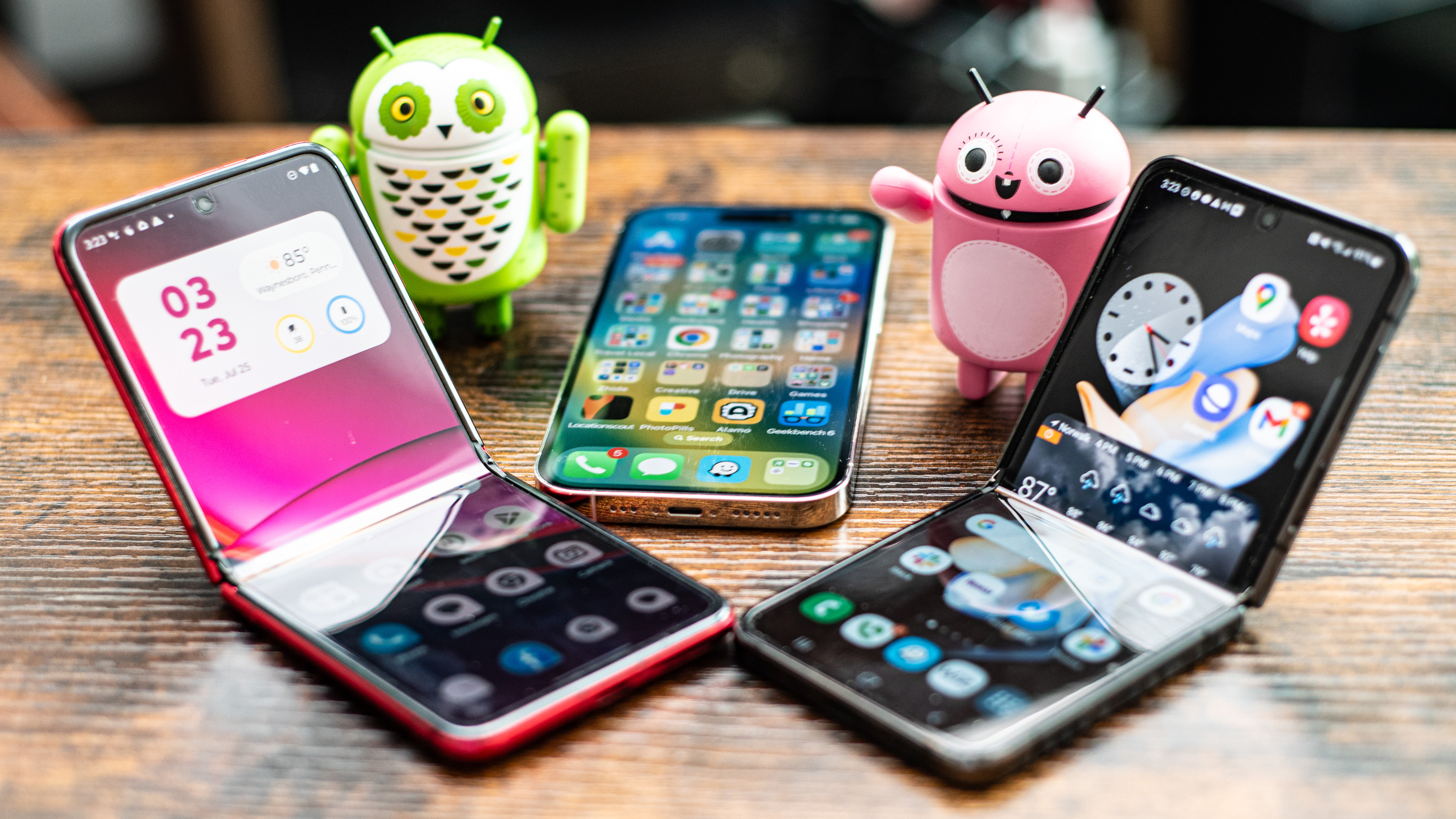Folding phones have wildly varying lifespans, according to this Motorola vs Samsung mega-test
The Samsung Galaxy Z Flip 5 is the folding test champion

Samsung and Motorola are currently facing off in a massive folding phone test, and Samsung has already won.
The test – being conducted by the YouTube channel Mrkeybrd – is seeing how many folds it takes to break the Motorola Razr Plus (or Razr 40 Plus outside the US) compared to the brand-new Samsung Z Flip 5.
Mrkeybrd has been live streaming its durability comparison test for both folding phones. The two hosts (now one since the Motorola phone is out of the race) are silently folding the respective phones which have trackers attached to count how many times they’ve been folded. We tuned into the live stream at the 350,000 fold mark for the Samsung Z Flip 5 and the stats on the chalkboard behind the lonely folder show a stark difference between the two phones’ results.
The Motorola phone’s hinge reportedly started to fail at roughly the 43,800 fold mark, with the screen breaking at around 126,300 folds. Meanwhile, Samsung’s phone’s hinge lasted until the 223,000 fold mark – but at 350,000 folds the phone’s screen was standing strong. One ‘fold’ counts as one complete cycle of closing and reopening the phone.
In more practical terms this means the Motorola Razr Plus Ultra hinge would be fine for roughly two years of using the phone an average of 60 times a day, with the screen surviving for five years and nine months. The Samsung Z Flip 5 would instead give you around 10 years of use before the hinge failed.
The scores are particularly interesting when you consider that Motorola has said its hinge is rated to last for 400,000 folds, while Samsung’s phone is only rated for 200,000.

Official tests vs real life
In a separate video, Mrkeybrd explained that one reason big reason for this discrepancy is that machine folders are more gentle – not only in how much force is used to fold the phones but how they apply it. Because of how the machines are designed, they apply an equal pressure across the phone’s whole hinge, while a human folder won’t be able to reliably do that – causing more strain on some parts and less on others. This less gentle folding will inevitably mean that the folding phone is likely to fail more quickly in a human-based test.
Sign up for breaking news, reviews, opinion, top tech deals, and more.
That said, it’s also worth noting a flaw with Mrkeybrd’s own testing – chiefly that we’re only seeing results from a very, very small sample size. The Motorola Razr Plus Ultra used in the test could be from an exceptionally bad batch and the Samsung Z Flip 5’s could be from an exceptionally good one. Motorola and Samsung’s own tests (while not perfect either) will benefit from the data likely being collected from a much greater number of devices being tested to their breaking point.
This doesn’t mean you should completely ignore Mrkeybrd’s test though. Motorola’s phone broke at 126,000 folds (around a third of the advertised 400,000 folds it can supposedly handle) and that should raise some concerns.

More than just durability
Samsung’s Z Flip 5 offers more than just improved durability, it also boasts a “top-tier performance” per our Samsung Galaxy Z Flip 5 review and a large cover display – though the cameras and display quality are very similar to what’s come before from the brand.
Unfortunately, while the newly designed hinge eliminates the gap when the clamshell is shut, its design can feel a little lackluster compared to the Motorola Razr’s vibrant colorways and its stylish vegan leather finish. That design is lacking in the waterproof department however – with it only having an IP52 rating (a very low waterproof rating) compared to the much higher Samsung Galaxy Z Flip 5’s IPX8 rating. You can read more in our Motorola Razr Plus review.

Hamish is a Senior Staff Writer for TechRadar and you’ll see his name appearing on articles across nearly every topic on the site from smart home deals to speaker reviews to graphics card news and everything in between. He uses his broad range of knowledge to help explain the latest gadgets and if they’re a must-buy or a fad fueled by hype. Though his specialty is writing about everything going on in the world of virtual reality and augmented reality.